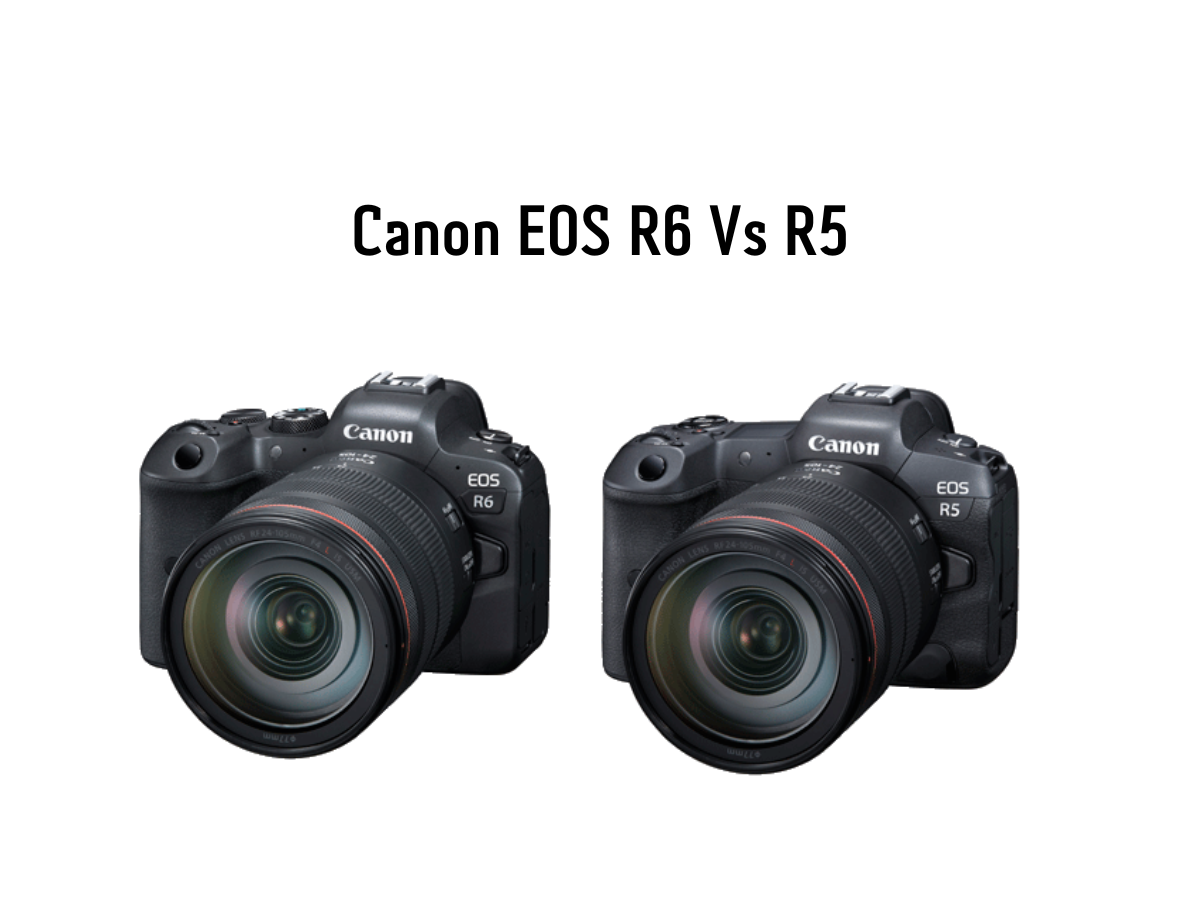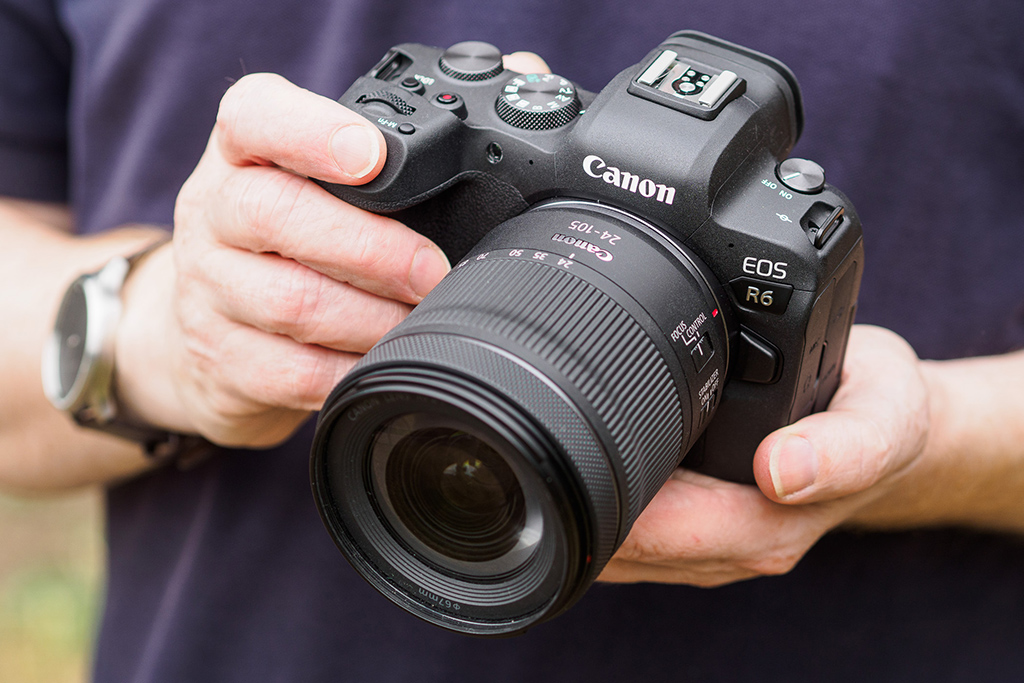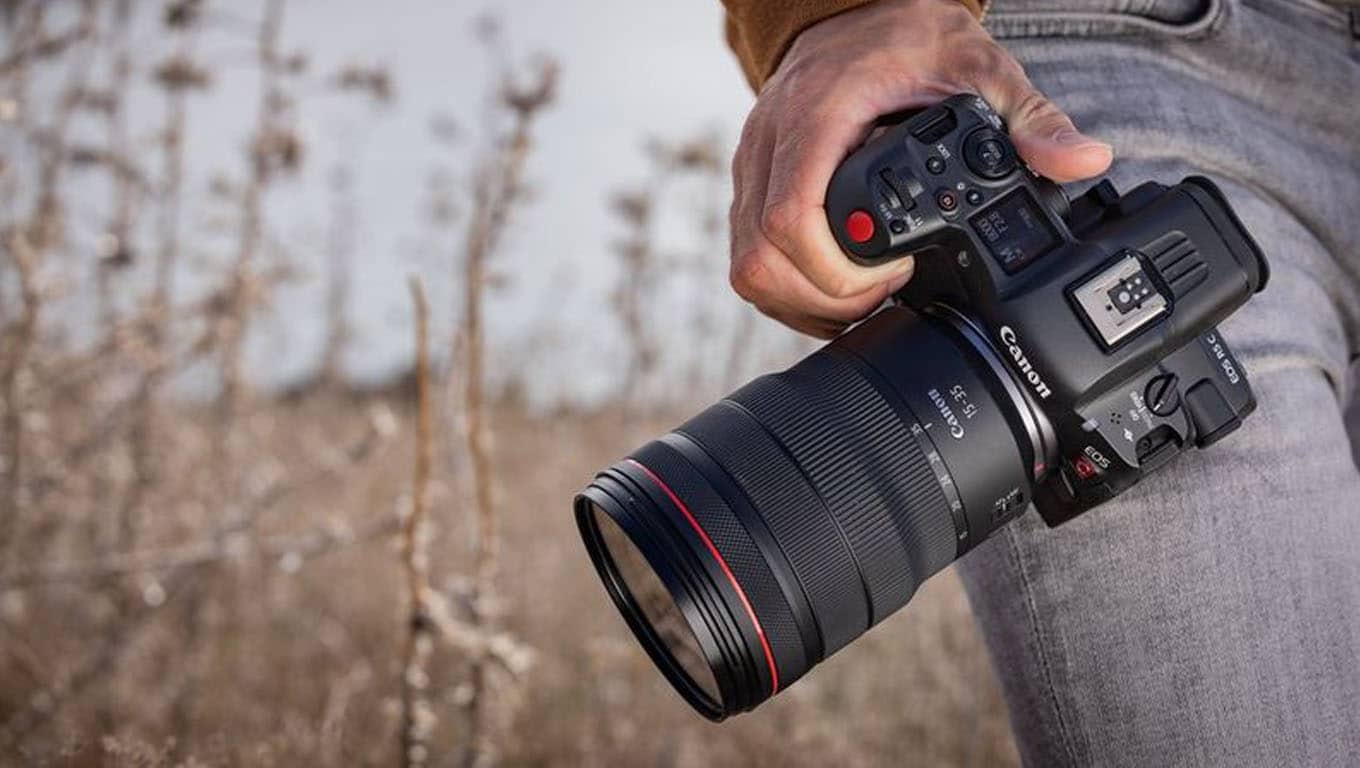The Canon EOS R6 and R5 are some of the latest full-frame mirrorless cameras from Canon. Both cameras offer high-end features and performance, making them ideal for professional photographers and videographers. In this article, we’ll take a detailed look at the differences between the Canon EOS R6 and R5, so you can decide which camera best fits your needs.
 In this comparison, we will talk about the following:
In this comparison, we will talk about the following:
- What is a Full Frame sensor?
- What are Canon EOS R6 and R5?
- How is the Design of Canon EOS R6 and R5?
- How is the Imaging of Canon EOS R6 and R5?
- How is the Autofocus in Canon EOS R6 and R5?
- How are the Connectivity and Storage in Canon EOS R6 and R5?
- What are the Pros and Cons of Canon EOS R6 and R5?
- Canon EOS R6 Vs R5?
Full-Frame Camera Sensor
A full-frame sensor in a camera refers to a type of image sensor that is the same size as a 35mm film frame, which is 36mm x 24mm. This is the largest image sensor commonly used in digital cameras, and it is considered the “gold standard” in terms of image quality and low-light performance. A full-frame sensor allows for a wide dynamic range and large depth of field, which is useful for capturing detailed and accurate images.
It also allows for larger pixels, leading to better low-light performance and less image noise. Additionally, it allows for a wider field of view when using the same lens compared to cameras with smaller sensors, such as APS-C or Micro Four Thirds sensors.
About Canon EOS R6 and R5
Canon EOS R6 and R5 are two high-end mirrorless cameras from Canon. Both cameras are part of Canon’s EOS R system, a line of full-frame mirrorless cameras. The Canon EOS R6 is a full-frame mirrorless camera designed for photographers and videographers. It features a 20.1-megapixel sensor and Canon’s advanced Dual Pixel CMOS AF system for fast, accurate autofocus and tracking. The Canon EOS R5 is also a high-end full-frame mirrorless camera for professional photographers and videographers. But, itt features a 45-megapixel sensor and an advanced Dual Pixel CMOS AF system for fast, accurate autofocus and tracking.

Both cameras are part of Canon’s EOS R system and are compatible with the RF lens mount. This new lens mount system allows fast and accurate autofocus and high-resolution imaging. Read also: Canon EOS R6 Vs Sony A7III here.
Canon EOS R6 and R5 Camera Body and Design
The Canon EOS R6 and R5 have very similar camera bodies and designs. Both cameras are constructed with a high-quality, durable magnesium alloy, making them both resistant to dust, water, and extreme temperatures. Both cameras also feature a full-frame sensor and dual card slots. The R5 is slightly larger and heavier than the R6, measuring 138 x 98.5 x 88.5mm and weighing 738g (body only), while the R6 measures 138 x 97.5 x 88.4mm and weighs 673g (body only). The R5 also features a built-in vertical grip, making it more comfortable to hold for longer periods. It also has a top LCD which is useful for quick reference of camera settings.

Canon EOS R6 and R5 Imaging and Performance
Regarding imaging and performance, the Canon EOS R6 and R5 are top-of-the-line cameras. Both cameras feature a full-frame sensor. However, the R5 has a higher resolution sensor of 45 MP while the R6 has 20.1 MP. Both cameras also feature Canon’s latest DIGIC X image processor, which provides fast performance and excellent image quality. Both cameras also offer a wide range of ISO sensitivity, up to 102,400, and can shoot up to 12 fps with the mechanical shutter and up to 20 fps with the electronic shutter. Both cameras also feature in-body image stabilization (IBIS), which is useful for capturing sharp images and videos in low light and using long focal length lenses. Read also: Canon Powershot SX420 Vs Sony DSC H300.
Canon EOS R6 and R5 Autofocus and Tracking
Both the Canon EOS R6 and R5 feature Canon’s advanced Dual Pixel CMOS AF system, which provides fast and accurate autofocus and tracking. The R6 offers 100% coverage of the AF area with its 6,072 selectable AF points, while the R5 offers 100% coverage of the AF area with 5,940 selectable AF points. Both cameras also feature real-time eye autofocus, which makes it easy to capture sharp, focused images of people and animals. The R5 also has Animal Eye AF, which can detect and track the eyes of animals like cats, dogs, and birds.
Canon EOS R6 and R5 Video Features
The Canon EOS R6 and R5 are excellent choices for videographers, as they offer advanced video features. Both cameras can shoot 4K video at 60fps and Full HD video at 120fps. The R5 also supports 8K video recording at 30fps, making it an ideal option for videographers looking to capture stunning, high-resolution footage. Both cameras also feature Canon’s Cinema RAW Light and C-Log, allowing greater color grading and post-processing flexibility. Additionally, both cameras have a built-in mic and headphone jack and support for external recording. The R5 also has a Dual Pixel Autofocus feature, which provides smooth and accurate autofocus during video recording.
Canon EOS R6 and R5 Connectivity and Storage
Both the Canon EOS R6 and R5 offer advanced connectivity options, including WiFi and Bluetooth, allowing easy image and video transfer and remote camera control. Both cameras also feature dual card slots, supporting SD and CFexpress cards. The R5 also supports SD UHS-II cards, allowing for faster file transfer. Both cameras also feature USB-C ports for fast data transfer and charging.
Pros and Cons of Canon EOS R6 and R5
Pros of Canon EOS R6:
- Lightweight and compact body
- The high-resolution sensor of 20.1 MP
- Advanced autofocus and tracking
Cons of Canon EOS R6:
- Lower resolution sensor compared to R5
- No built-in vertical grip
Pros of Canon EOS R5:
- The high-resolution sensor of 45 MP
- Advanced autofocus and tracking
- Built-in vertical grip and top LCD
- 8K video recording
Cons of Canon EOS R5:
- Heavier and larger body
- High cost compared to R6
Canon EOS R6 Vs R5
Regarding resolution, the Canon EOS R5 boasts a high-resolution sensor of 45 megapixels, while the Canon EOS R6 offers a still impressive 20.1 megapixels. The R5 also has a larger and heavier body with a top LCD. Additionally, the R5 is equipped to record 8K video at 30fps, a feature that the R6 does not have. The Canon EOS R6 and R5 can capture stunning, high-resolution videos with their ability to shoot 4K video at 60fps and Full HD video at 120fps.
The R5 stands out with its ability to record 8K video, providing even more detail and clarity. Both cameras also feature Canon’s Cinema RAW Light and C-Log, enabling greater flexibility in color grading and post-processing for professional-grade videos.
Conclusion
The Canon EOS R5 is the best choice for professional photographers and videographers who need the highest resolution, 8K video recording, advanced autofocus, and tracking features. The R6 is a more portable and lightweight option with a high-resolution sensor and advanced features. It can also shoot 4K 60fps and full HD videos at 120fps, making it a versatile camera. Both cameras are part of the EOS R system and are compatible with the RF lens mount. Your choice will depend on your specific needs and preferences.